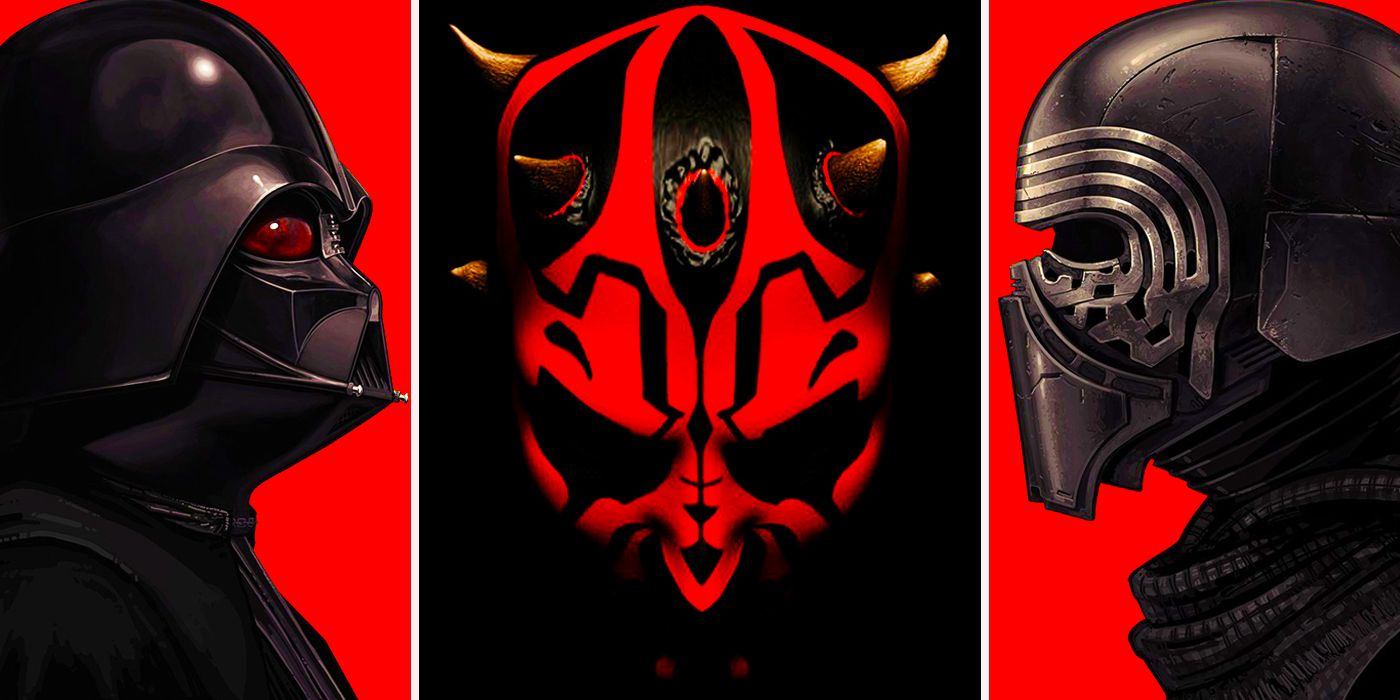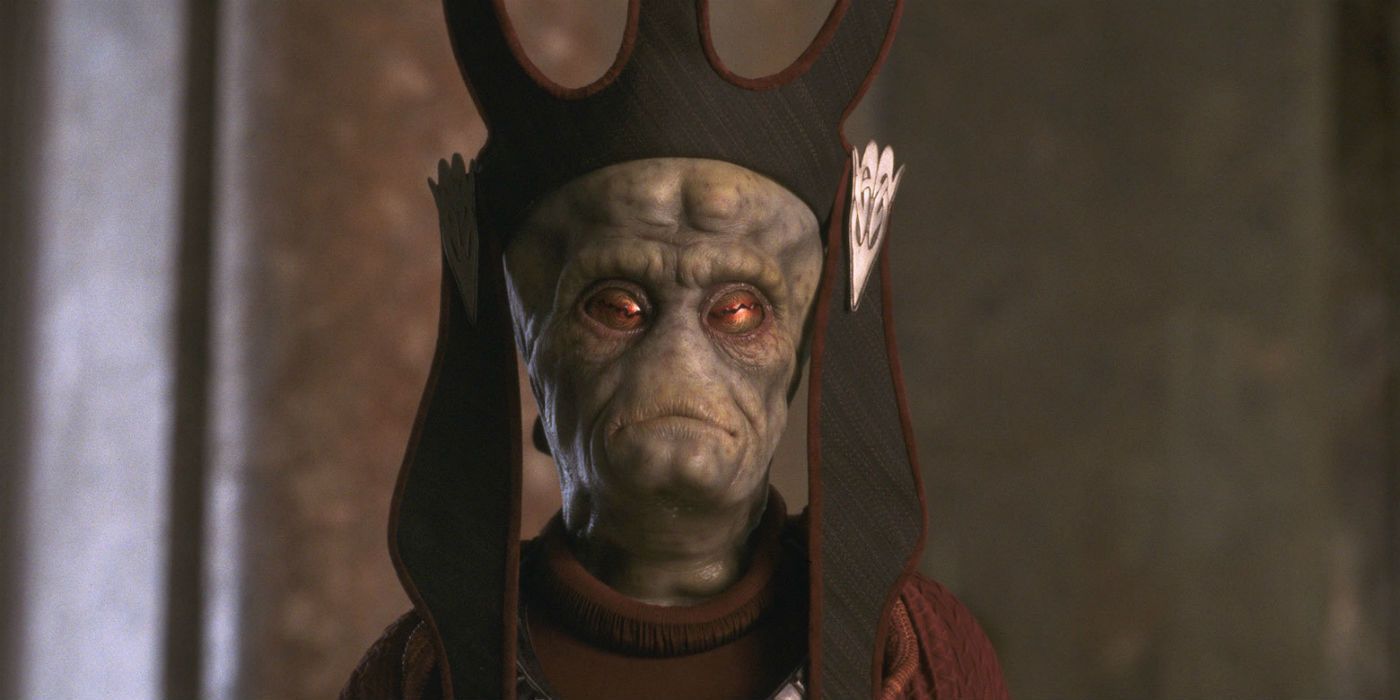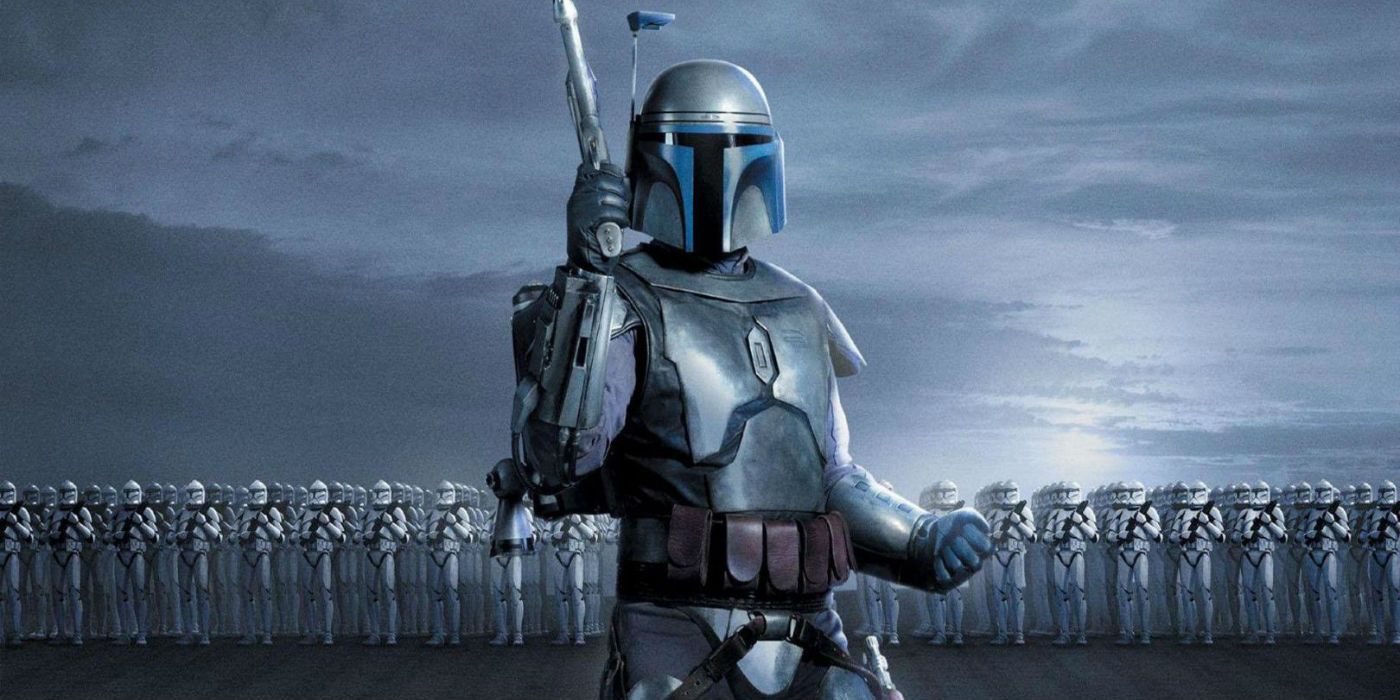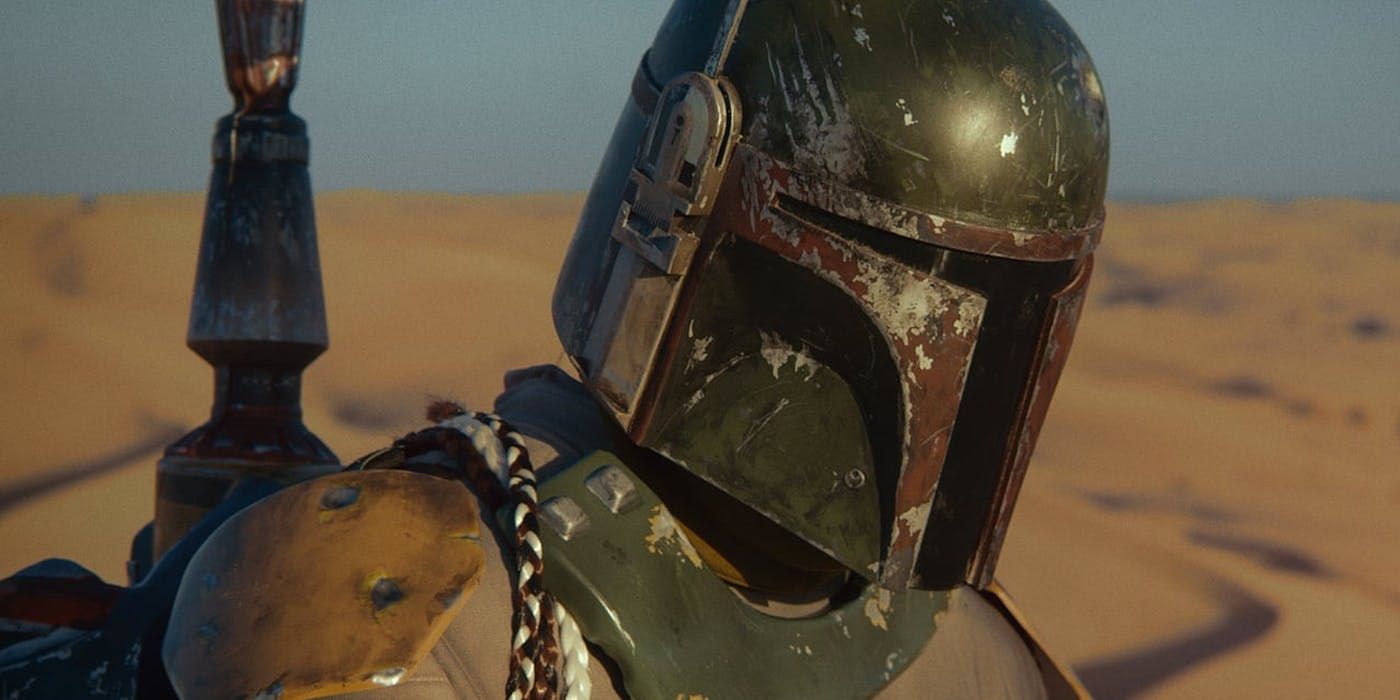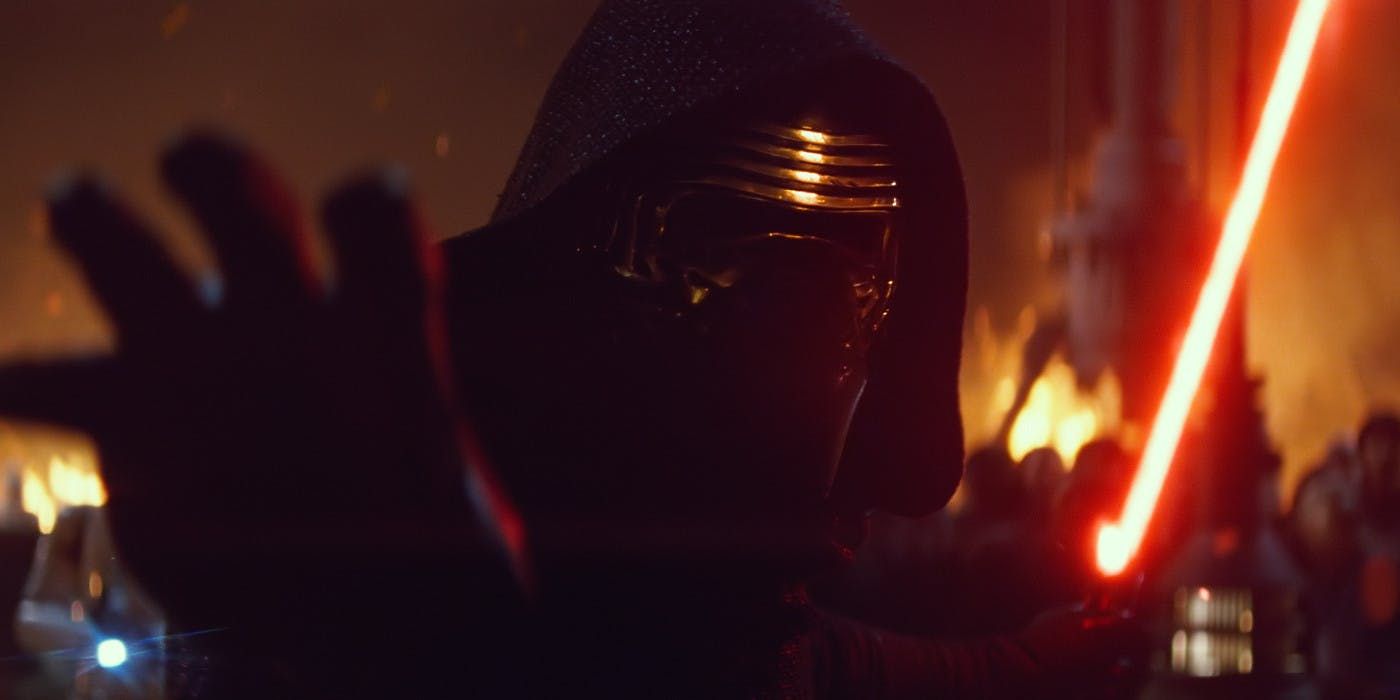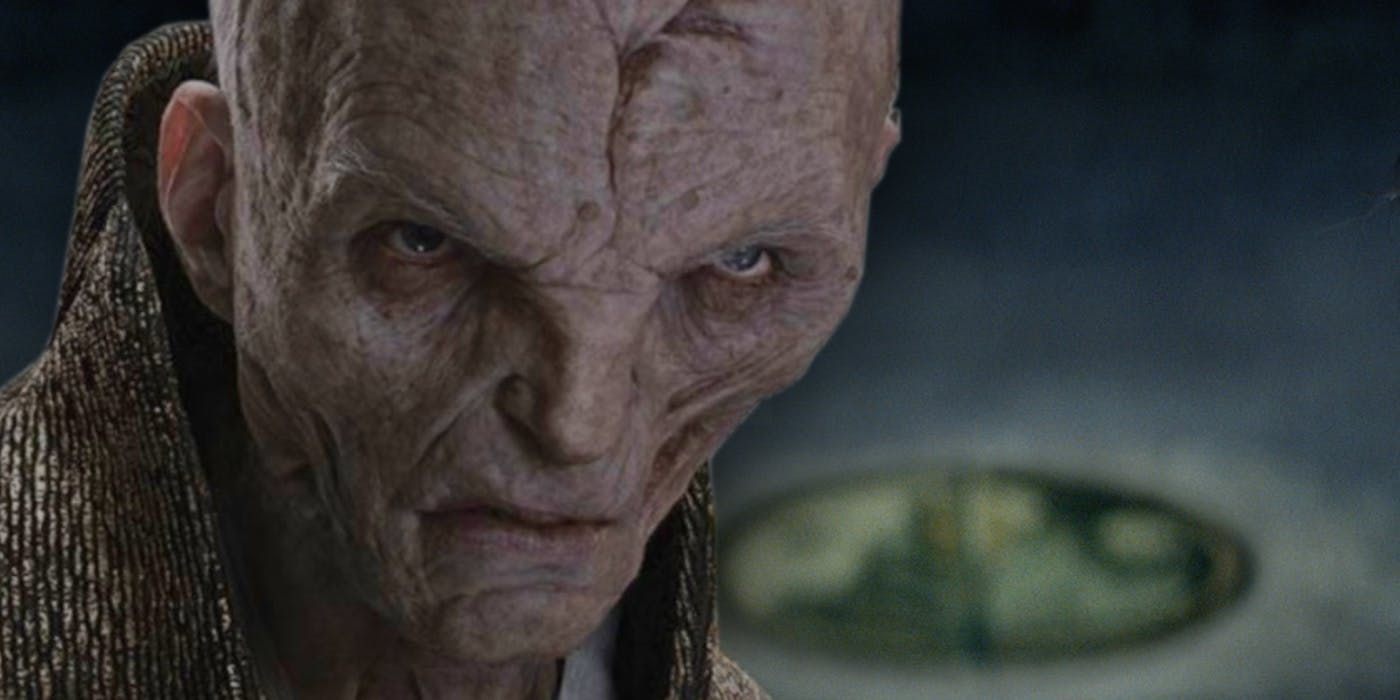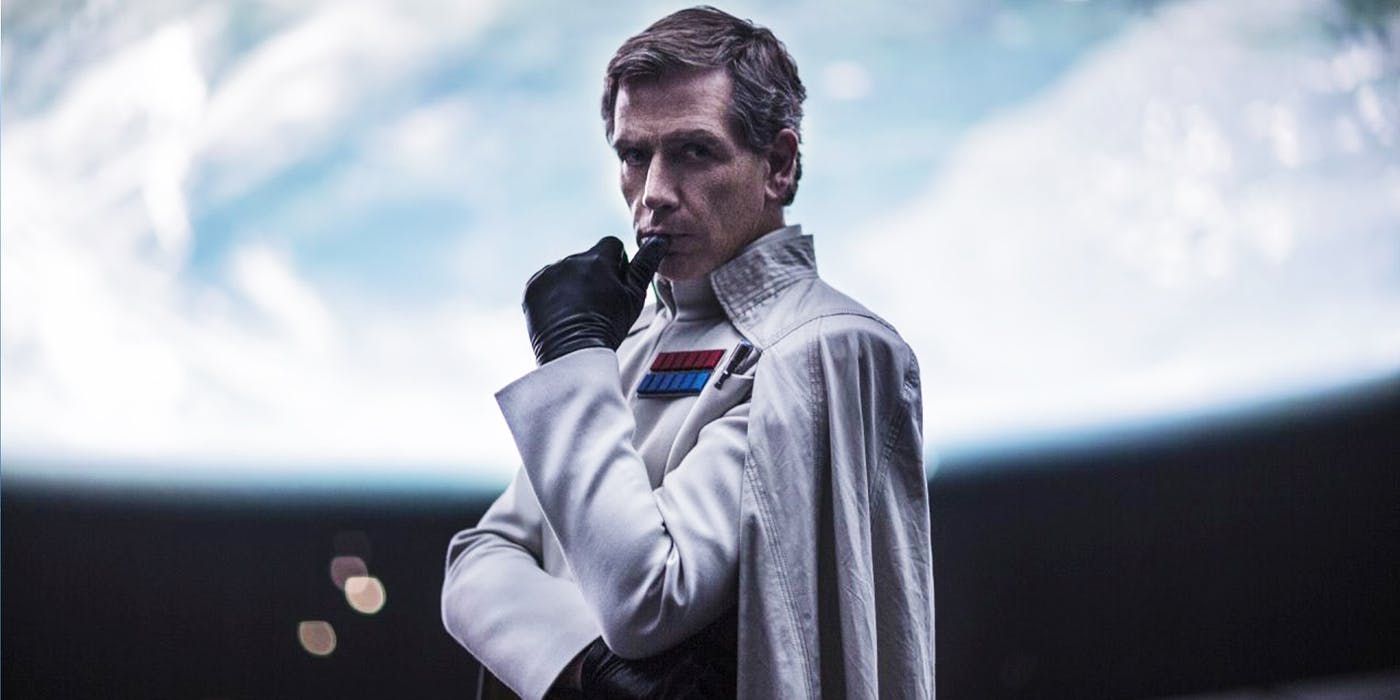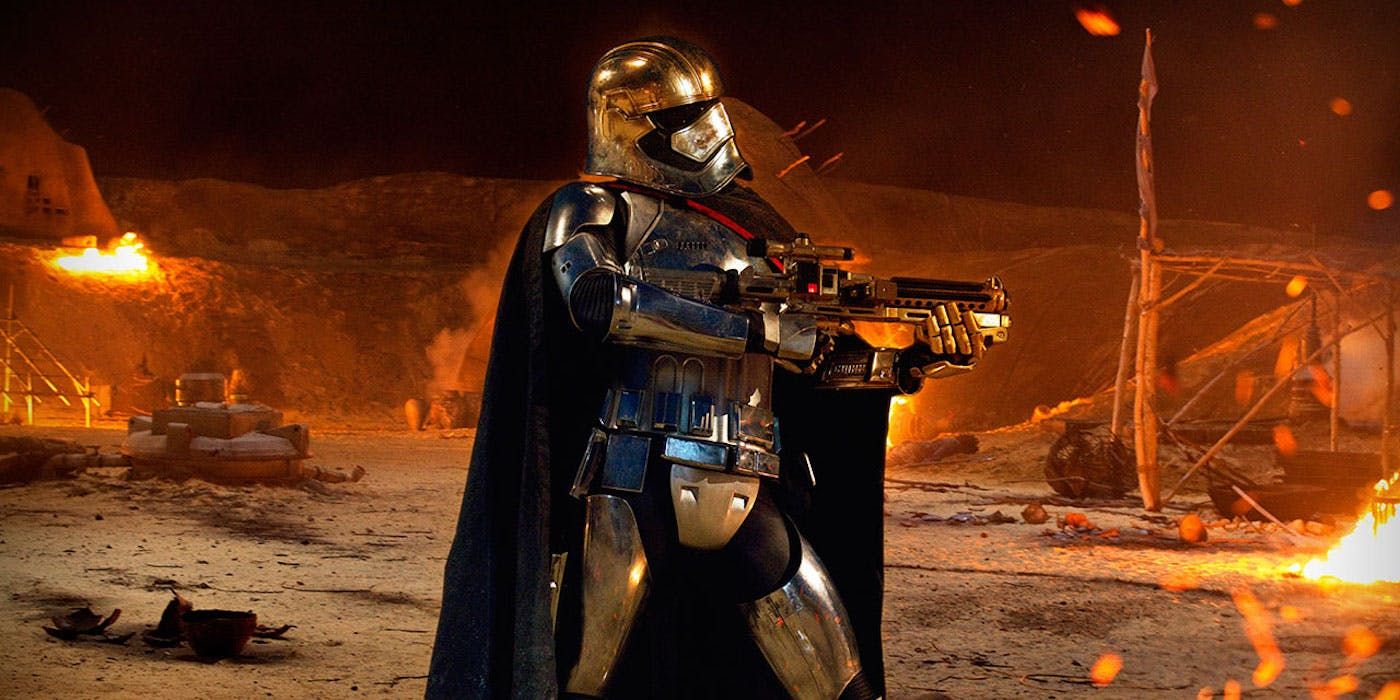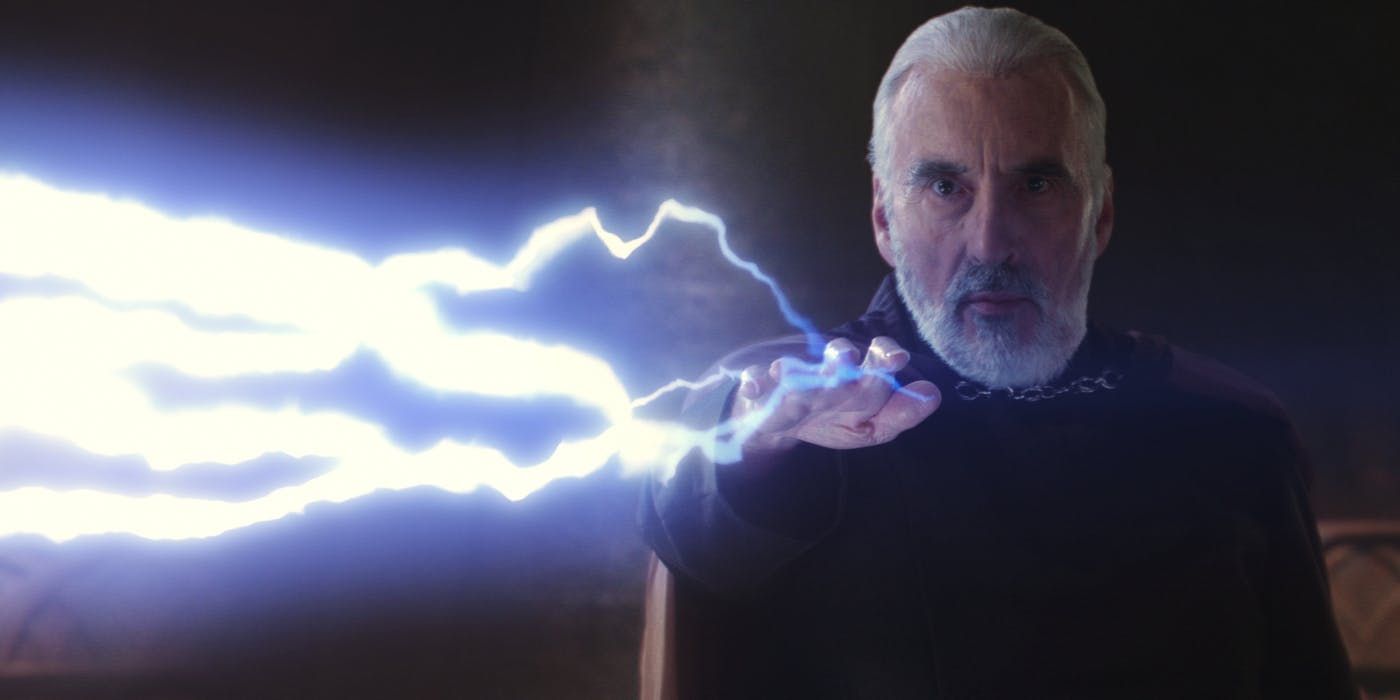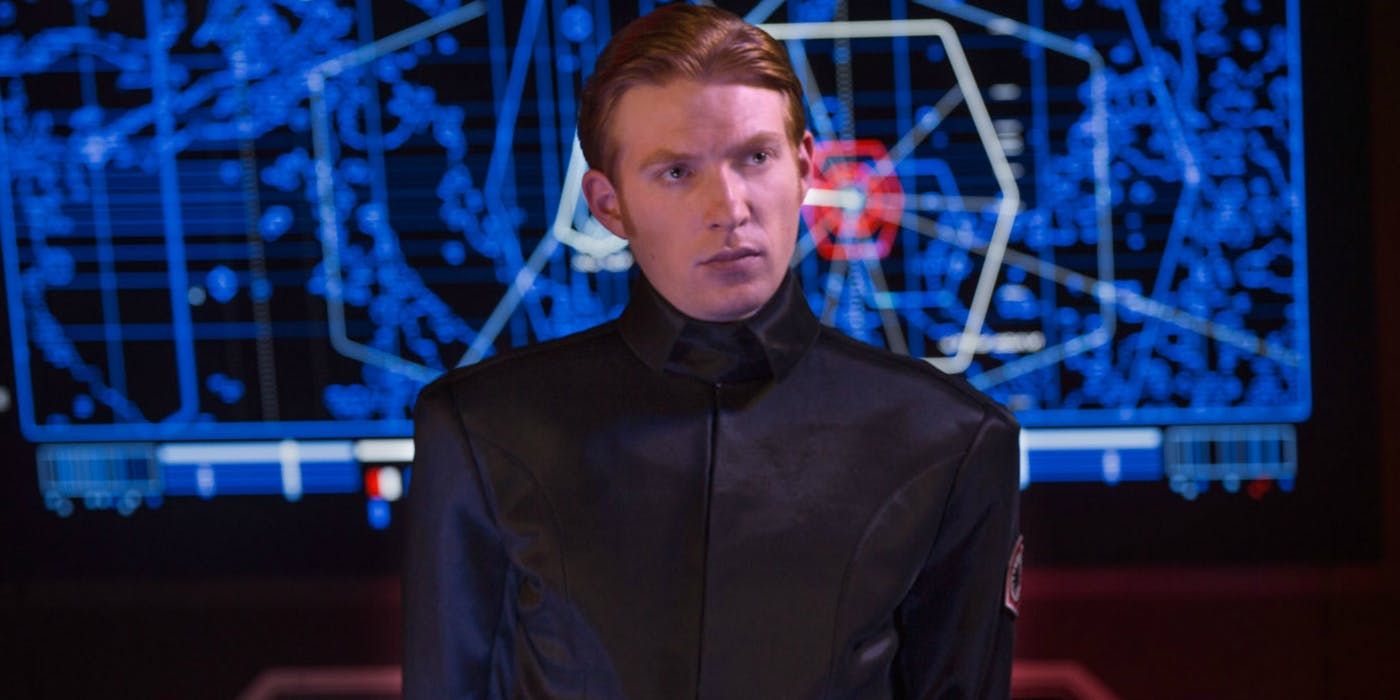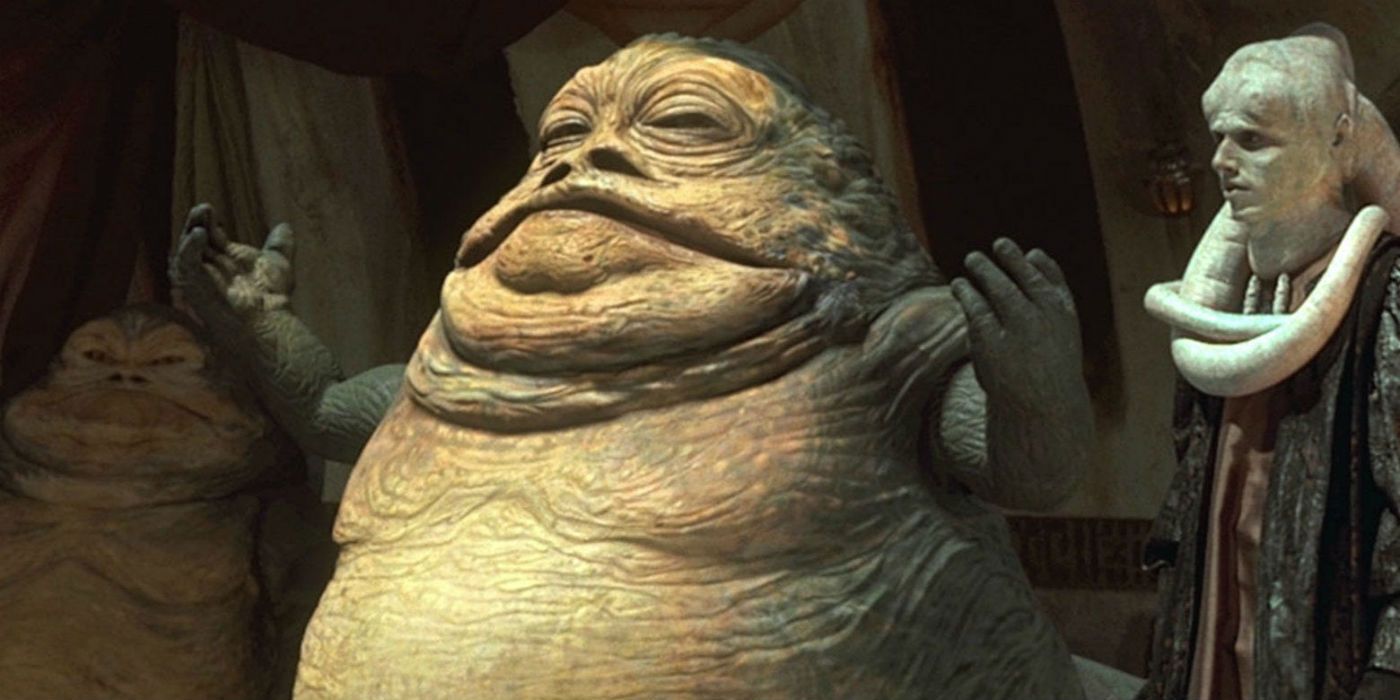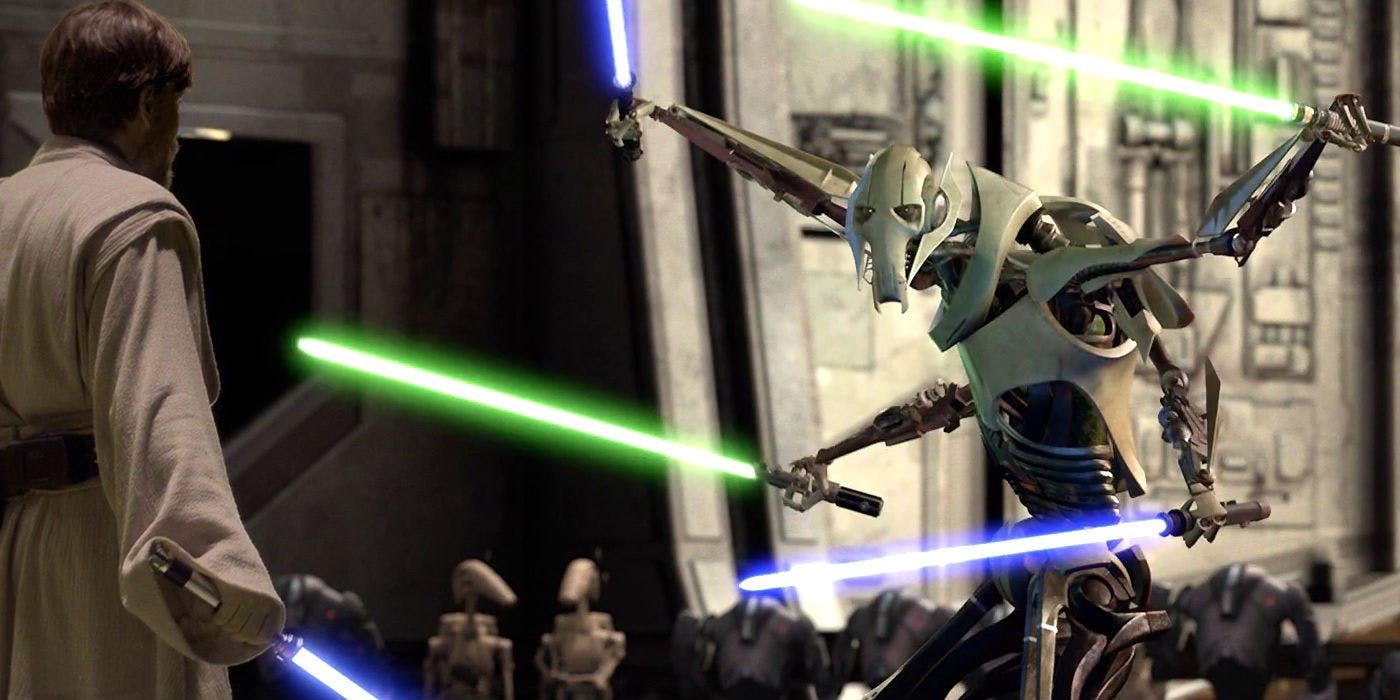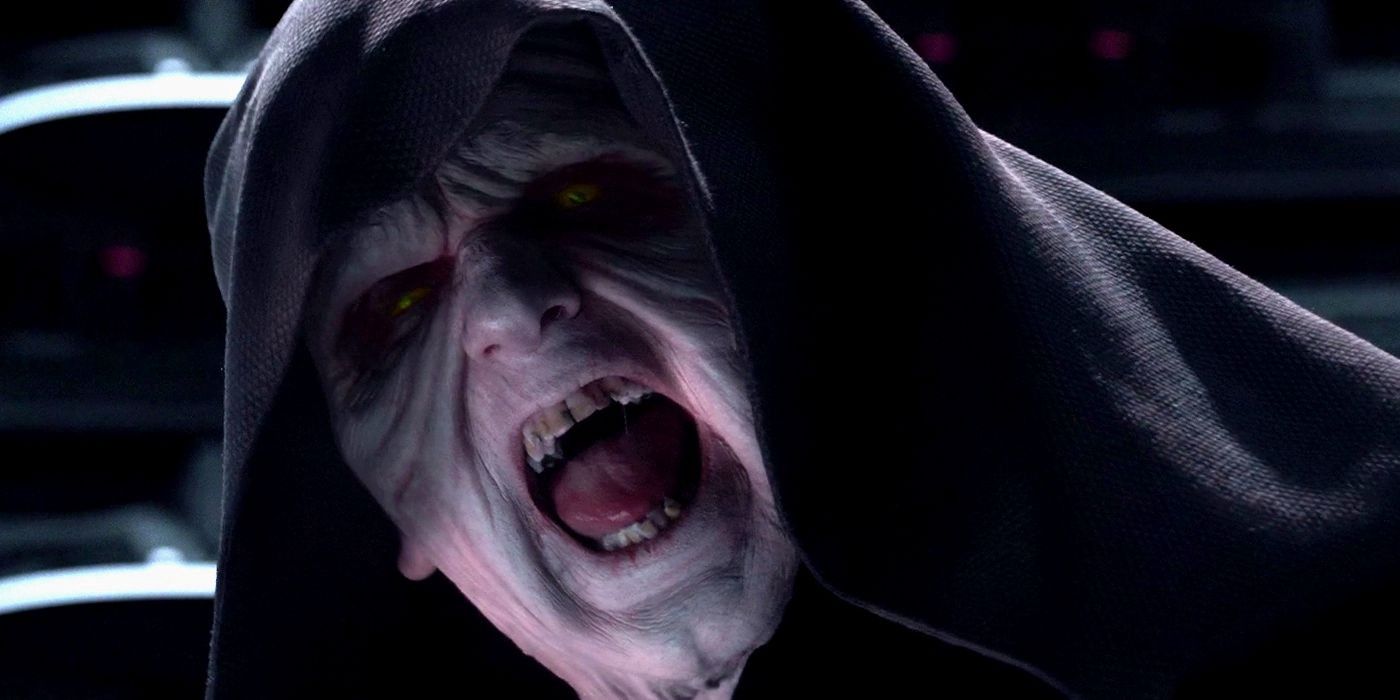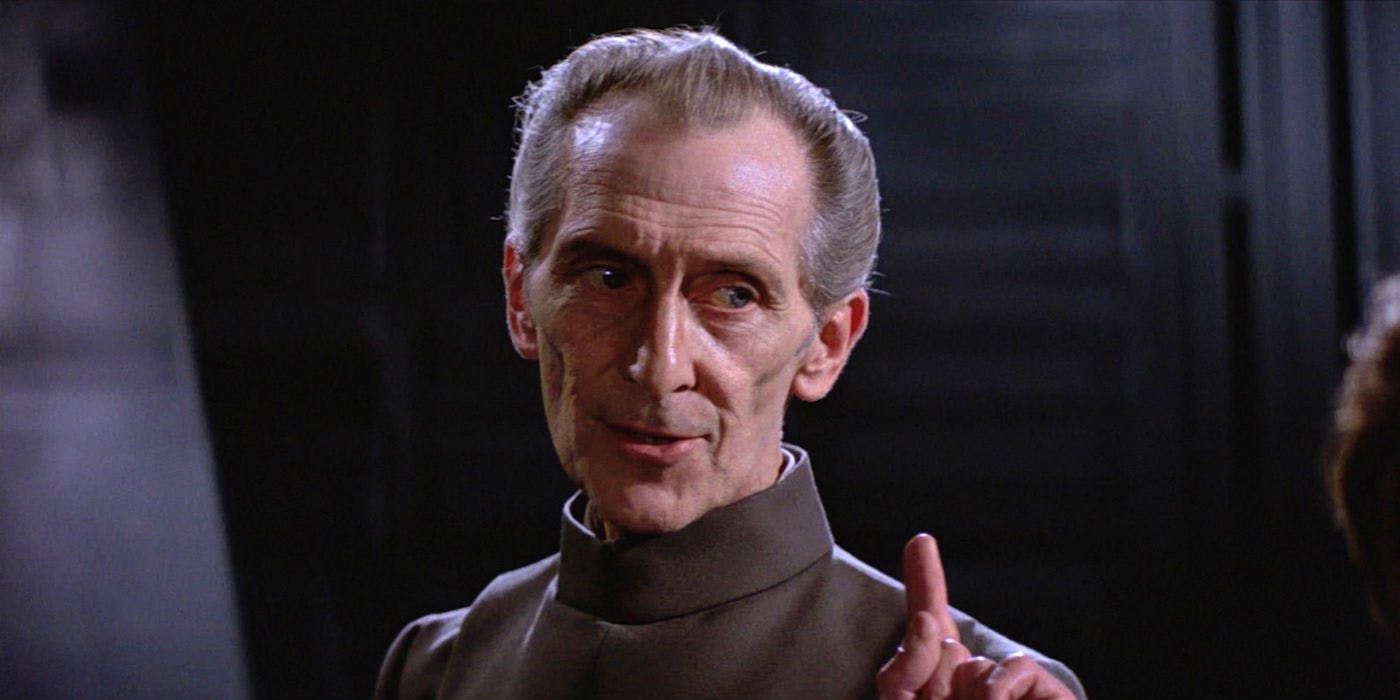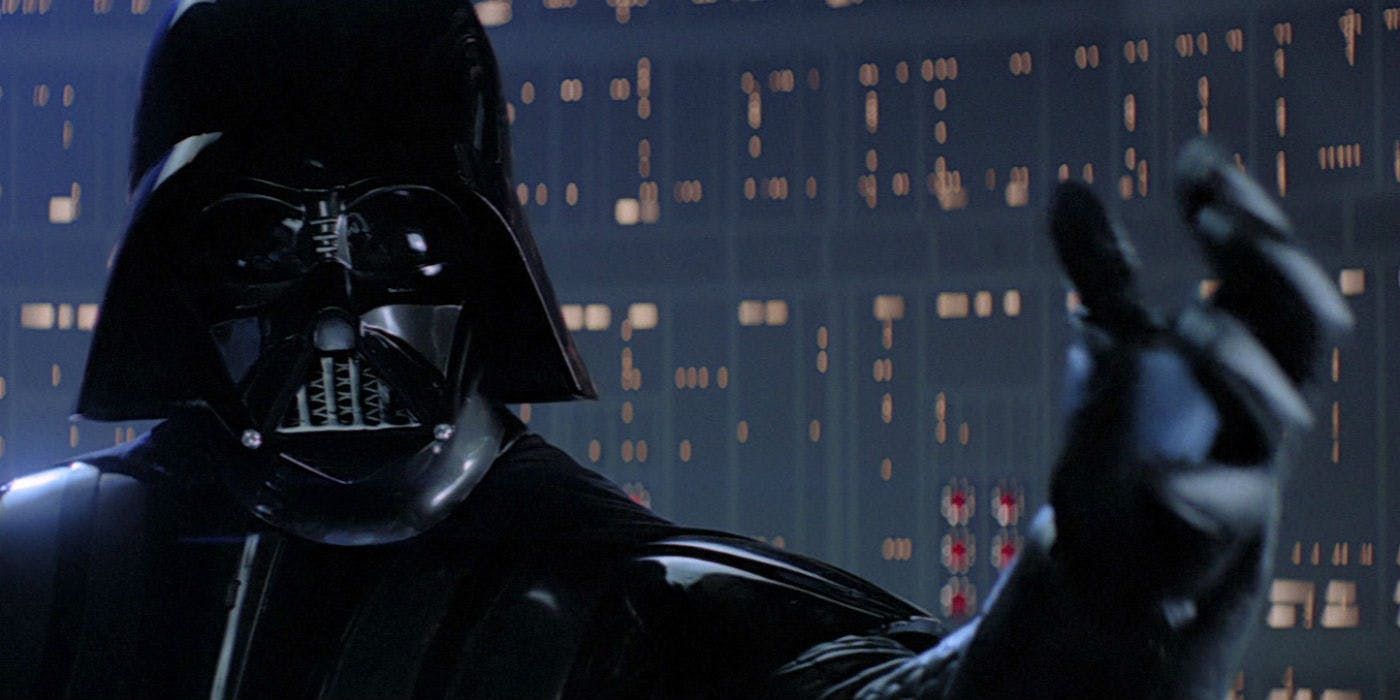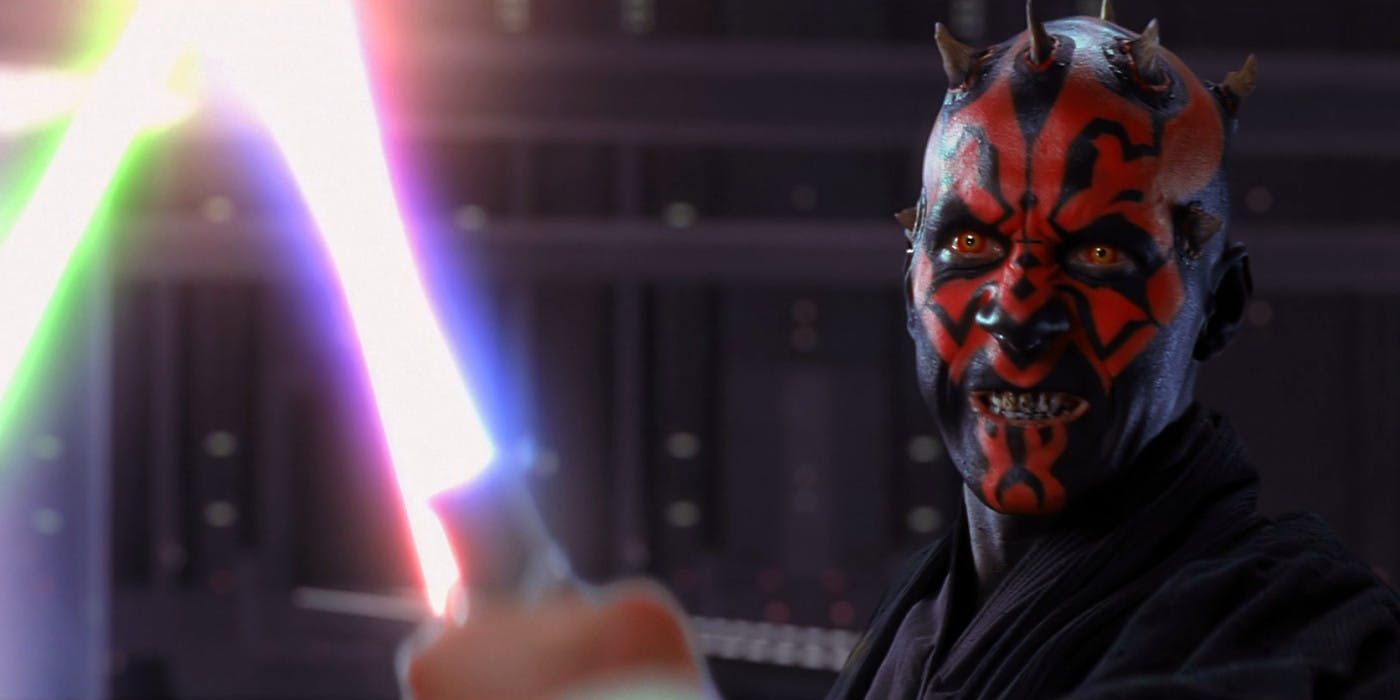The Star Wars films consistently elicit as much ire from dedicated fans as zeal. If you don't believe that, you've clearly never spoken to anyone about The Last Jedi or Rian Johnson. The films get a lot of things right -- even if some of it wasn't wholly intentional, but they also get a lot wrong, like a certain gungan who was given power in the Senate. No aspect of the films reflects that better than their antagonists, which range from masterfully written to woefully underdeveloped. That's what we'll be exploring in this list.
Before we do, let's clarify a few things. As most folks reading this already know, many of the Star Wars characters have been explored in great detail through comic books, novels and television shows, but we won't be looking at any of that here. We're only interested in these villains as they are depicted in their respective films in regards to how they are written. That means, no matter how great the actors were, their skills will not be taken into account. We're only looking at the characters. Now that that's clear, let's take a look at the seven villains the Star Wars films nailed and the eight that were badly written.
15 FAILED IT: NUTE GUNRAY AND THE TRADE FEDERATION
One of the aspects of the prequels you'll hear some fans criticize is the overarching plot involving trade disputes and politics. The prequels begin with the Trade Federation's blockade of questionable legality around the planet of Naboo. The Jedi Order sent Obi-Wan and Qui-Gon to resolve it in The Phantom Menace and... well, the rest, as they say, is history. Not great history, but history all the same. That plot smoothly sent them to Tatooine and to Anakin Skywalker, but not before hitting a few Jar Jar-sized speed bumps and tedious franchisers. Ultimately, the character and the attached political sect failed to add anything substantial to the story.
Nute Gunray (Silas Carson, Tom Kenny), Viceroy of the Trade Federation, seemed to be in the film as a clumsily implemented device to bring Palpatine into the picture. In the context of the overall plot, Gunray and the Trade Federation had potential, but ultimately, the character and the attached political sect, failed to add anything substantial to the story other than a narrative skeleton over which something great was written. It could have added to the depth and size of the Star Wars universe, but it didn't. It could have further highlighted Palpatine's skills and qualities as a character through conflict, like any real relationship between a businessman and a politician, but it didn't. It could have been used in a variety of ways, but it wasn't. It was just disappointing, more so in later films.
14 NAILED IT: JANGO FETT
Jango is definitely under-appreciated. First appearing in Attack of the Clones, Jango Fett (Temuera Morrison) was revealed to be not only the assassin behind the attempt on Amidala's life, but the progenitor of the clone army. He has a son of sorts, Boba, an unaltered clone who lived with him on Kamino until the two fled after a visit from Obi-Wan revealed that Jango was the prime suspect in Obi-Wan's investigation. He escaped to Geonosis, where he was slain by Master Windu.
Even though the character only appears in Attack of the Clones, he has a huge impact on the course of events that unfold over multiple films. Aside from leading Obi-Wan to the clone army, Jango's presence ultimately led to Anakin and Padmé's ill-fated romance and in turn, the downfall of the Jedi Order. Then there's his death, which turned Boba into one of the franchises most iconic bounty hunters, which we'll get to in a moment. Jango Fett's scenes were brief but each and every one was significant to the overall plot, from the Kaminoan dart to his end on Geonosis. Every scene had a reason behind it and because of that, his role in the plot felt organic and vital.
13 FAILED IT: BOBA FETT
Some fans may almost immediately recognize the reasons why Star Wars failed Boba Fett. When he first appeared, he garnered a lot of attention as the silent bounty hunter almost everyone expected to hinder the journey of our heroes. Unfortunately, when it came time for him to fight, he was quickly defeated in spectacular fashion. This was not because it wasn't an amazing scene, but because of how simplistic and disappointing it was. A blind Han Solo (Harrison Ford) unknowingly knocked Fett into the Sarlacc Pit, after which the bounty hunter was never seen again.
There was next to nothing in regards to writing Boba Fett. He was essentially a set piece that had no effect on the plot. The reason for that is likely because Fett was created when Lucas intended for his saga to cover three trilogies. He had intended to make Boba Fett the main antagonist of Return of the Jedi; however, after his decision to confine the plot to one trilogy, he had to make room for Darth Vader and Sidious, meaning Boba Fett would have to be limited to an appearance here and there with a backstory that was never explored... in the films at least.
12 NAILED IT: KYLO REN
With a new trilogy came a new antagonist. Kylo Ren may have based his identity on the grandfather he idolized but he was vastly different. He was younger, more prone to outbursts of rage and held less conviction than Darth Vader. He committed to evil acts but there was still a lot of hesitation. Ren was constantly struggling between the light and the dark sides of the Force. We saw that when he killed Han Solo in The Force Awakens and again when he revealed how the Jedi betrayed him in The Last Jedi.
To some, Kylo Ren may just be a more juvenile version of Vader, but there's more to him than that. The audience is left curious as to what new direction Ren will drive the plot. That was clearest in The Last Jedi when, in a shocking move, he killed Supreme Leader Snoke and fought alongside Rey, however briefly. The way Ren was written successfully distinguishes the character from all those who preceded him. Aside from Vader, none have sparked this much conversation. Fans are left asking if he's worth sympathy or if there's no good left in him worth saving. He may not be perfect as a villain, but he is far from badly written.
11 FAILED IT: SUPREME LEADER SNOKE
Snoke was the mysterious leader of the First Order, introduced in The Force Awakens. Knowledgeable and clearly experienced in the dark side of the Force, Snoke was the one who turned Kylo Ren away from the teachings of the Jedi and caused him to attack his former friends and allies. He's never seen with a lightsaber in hand, but his mastery of the Force was made clear several times in The Last Jedi. Unfortunately, the films failed to properly develop Snoke as a character, leaving him as one of the most lacking aspects of the new trilogy.
The reason for the lack of an introduction and backstory in regards to Snoke is clearly because the filmmakers wished to emulate the kind of mystery and terror that Darth Sidious successfully evoked. However, there's a clear lack of understanding as to why Sidious worked without a backstory or proper introduction and it boils down to this: Snoke arrived in the middle of an expansive story, not the beginning, which means his existence upsets the plot and the logical structure of the overarching story. Simply put, it's convoluted and disruptive. There's an easy fix, but for now, Snoke is definitely a failed villain from a narrative perspective.
10 NAILED IT: ORSON KRENNIC
There was a lot to praise about Rogue One and its villain, Orson Krennic (Ben Mendelsohn), was definitely one of them. The film existed to explain one of the glaring plot holes in A New Hope, so the plot and characters would have to exist in one almost wholly self-contained film. Orson Krennic, the Director of Advanced Weapons Research for the Empire was the perfect villain for that. He kills Jyn Erso's family and essentially -- though unwillingly -- gives the Death Star to the Empire.
You'll notice that as a villain, Krennic bore all the hallmarks of a quintessential villain. He acted on greed and ego, didn't care at all about the lives he ended and yet his character was still able to convey a bit of depth. He was a man of ambition and that ambition had a notable impact on the Star Wars universe. Not only that, but it highlighted the qualities of the characters around him. Grand Moff Tarkin for example, was shown to be even more cruel and uncaring than previously thought, even toward his colleagues and allies. Krennic's relationship with Tarkin humanized the former and therefore might have even earned him a bit of sympathy from the audience, making for a more intriguing villain than other one-shot antagonists.
9 FAILED IT: CAPTAIN PHASMA
A lot of attention was given to Captain Phasma (Gwendoline Christie) when The Force Awakens released its first trailer. Everyone pretty much expected the chrome armored villain to be the new trilogy's Boba Fett, except this time around, this villain would be given a chance to show everyone how much of a formidable foe she was. Despite two appearances of considerable lengths in both The Force Awakens and The Last Jedi, no exhibition of power or really any character, was ever given to us.
Phasma had a few lines that showcased how cold she was, but nothing more. She was written as a loyal and disciplined soldier with no reason as to why. When she was finally confronted in The Force Awakens, she presented little in the way of challenges; in fact, after unwillingly aiding Finn, Solo and Chewie, she was never shown again. Then, after finally capturing Finn in The Last Jedi, she was quickly defeated. As a character, Captain Phasma bordered on being completely redundant. She had no real effect on any of the characters of the events that unfolded around her. Despite ample opportunity to expand on the faceless villain, the new trilogy seems to have dismissed her as being a more of a marketing pawn than anything else.
8 NAILED IT: COUNT DOOKU
Count Dooku (Christopher Lee), also known as Darth Tyranus, was Darth Sidious' second apprentice. As revealed in Attack of the Clones, he was a former Jedi master who became disillusioned with Jedi teachings and joined the Sith and the Trade Federation. He was a formidable warrior, able to defeat Obi-Wan twice in combat and maim Anakin in their first duel. Skywalker got his revenge in Revenge of the Sith when he executed Dooku at Palpatine's behest.
If you examine the character beneath Christopher Lee's masterful skills, you'll find someone who just barely avoids being completely one-dimensional. He's steadfastly loyal to Darth Sidious and he's incredibly confident in his skills, as all Sith are, that much is clear. What distinguishes him from others is that he seems to remain somewhat sympathetic toward the Jedi. He showed a surprising amount of mercy to Obi-Wan, in contrast to his master. Dooku, as depicted in the films, seemed to genuinely believe that he was saving the Republic, though this may have been a ruse to deceive Obi-Wan. That's the thing with Count Dooku, he was certainly evil but we were never really certain of his intentions, which made him one of the prequel trilogy's most interesting villains.
7 FAILED IT: GENERAL HUX
A prominent antagonist in the new trilogy and one of the leading figures of The First Order, General Hux (Domhnall Gleeson), was introduced in The Force Awakens as somewhat of a fanatic, fighting for authority against Kylo Ren. That is, until Ren took control of the First Order by murdering Snoke in The Last Jedi. From that moment on, Hux's status as a subordinate was solidified.
The new trilogy thus far hasn't been able to build on General Hux as much as its other villains. He's shown to be somewhat of a typical evil villain -- one who throws his resources recklessly at the pursuit and eradication of his enemies, without care for the lives of his underlings. It's understandable that the new trilogy films would want to focus more on its star villain, but it's disappointing that Hux got no time at all to demonstrate anything other than the superficial evil that we've seen so many times before. Without the emotional connection to the audience or any of the characters around him, Hux has a tendency to appear as an almost cartoon-like antagonist in many of his scenes. His impact on the story is minimal; his role could be replaced by anyone, which speaks to the lack of depth and arguably, the lack of effort evident in the writing of the character.
6 NAILED IT: JABBA THE HUTT
Being a bulbous alien slug, Jabba was clearly not introduced to the saga as an antagonist the heroes could fight head to head. A New Hope introduces him as a gangster, trying to collect on Han Solo's debt. Slowly, his role as an antagonist grows until finally, Luke, Leia, Lando Calrissian and the rest of the gang, must work together to defeat him and his band of thugs in Return of the Jedi.
He might not have been the most eloquent of villains or even necessarily the most exciting one, but he affected the characters around him significantly, and from his introduction to his death, he grew in a wholly believable and organic way. He wanted to capture Solo because the smuggler owed him and refused to pay him back. He was a gangster and his greed placed him in the path of Solo's closest allies. They couldn't march into Jabba's palace and fight the Hutt like Luke eventually did with Darth Vader. They had to use cunning and wit, they had to be patient and cautious. Vader sparked the change in these characters, Jabba acted partially as the catalyst, making him an important part of the plot as well as the character development of several protagonists.
5 FAILED IT: GENERAL GRIEVOUS
Those following the prequel trilogy and not the cartoons, might have been a little surprised to find yet another important figure in the Separatist Movement brought to light. General Grievous (voiced by Matthew Wood and George Lucas) was a warrior trained by Count Dooku in the use of lightsabers, which aided him as leader of the Separatists' massive droid army, even if he couldn't use the Force. He was formidable fighter, able to defend himself against Jedi knights, including Obi-Wan. But the character's effect, coupled with his sudden appearance, places him in the same realm as a simple McGuffin.
Fans of the cartoon series may have been relatively content with the character's depiction in Revenge of the Sith since it's taken in consideration with his depiction in the series such as Star Wars: The Clone Wars, but the film itself (the only one he appears in) fails to convey any kind of complexity from the character, which is a shame because there's clearly more to him than meets the eye. Mace Windu correctly states that he's a coward, yet he's been able to slay more than a few Jedi, judging by his collection of lightsabers. It raises questions about the character which the film doesn't seem interested in answering. He's just there for a brief but awesome lightsaber battle against General Kenobi. He does affect the plot, so he's certainly not wholly pointless.
4 NAILED IT: DARTH SIDIOUS
The first time we saw Darth Sidious (Ian McDiarmid), he was the mysterious hooded figure controlling the man we thought was the main antagonist of the series. Unlike Vader, Sidious was completely, irredeemably evil. He was cunning, cruel and he enjoyed everything his power afforded him. We didn't need to see any more from him in the original trilogy, his role as the ultimate form of evil aided Vader's story of redemption, and that was the point. The prequel trilogy expanded on the character and while there was the risk of ruining something great, the prequels executed that development and expansion almost perfectly.
They didn't change the character at all, they only highlighted the qualities that made him a great villain. He was cautious in the execution of his schemes, he was cunning and patient and there's no greater example of that than his relationship with Anakin, whom Sidious carefully groomed to become his new, more powerful apprentice. There was little in the way of complexity but Sidious didn't need it. His role as a symbol for evil in the journey of Anakin Skywalker was enough to compensate. He marked the looming evil that awaited when one strayed from the teachings of the Jedi, he embodied the darkness and cruelty of the Empire, which is why Darth Vader's final act in Return of the Jedi was so powerful a moment.
3 FAILED IT: GRAND MOFF TARKIN
After the remnants of the republic were dissolved, Emperor Palpatine sent Darth Vader and Governor Tarkin (Peter Cushing, Guy Henry) on a hunt for the rebellion. When Vader fails to extract information from Leia, Tarkin decides to threaten her using her home planet of Alderaan. Even after she reveals the location of the rebel base on Dantooine, Tarkin unleashes the power of the Death Star and obliterates Alderaan, to set an example for all those who would join the rebels against the Empire. Unfortunately, with the film's focus on Vader and Luke, there isn't much room for supporting characters like Tarkin.
A New Hope and Rogue One make an attempt at developing Tarkin, possibly as a means of demonstrating just how rotten everyone in the Empire is. Unfortunately, with the film's focus on Vader and Luke, there isn't much room for supporting characters like Tarkin. He's clearly evil and capable of atrocious acts, but we never get to see the character display his villainous qualities beyond the destruction of Alderaan. He was the commander of the Death Star but only in name. The film showed us more of Darth Vader's authority on the station. To be clear, we're not criticizing the characterization, or claiming that his role had no impact, because it clearly did. It's the way he was written into the overall story that's disappointing. It's always upsetting when there's that much potential left unexplored.
2 NAILED IT: DARTH VADER
Despite the prequel's depiction of Anakin Skywalker (Hayden Christensen) being riddled with what appeared to be screenwriting flaws -- most of them dialogue-related -- the story of Darth Vader (David Prowse and James Earl Jones) is generally very well developed. From aspiring pupil to ruthless Sith lord to redeemed father, Vader has undergone quite the arc through his appearances, which one should expect, seeing as how the entire Star Wars saga has thus far centred on him and his family.
It's difficult enough sculpting a villain worthy of three films, let alone two trilogies, but George Lucas certainly succeeded with Darth Vader. He's compelling in almost every way imaginable, from his tense relationship with his son to his struggle with the dark side of the Force and we see that in him as he develops throughout each film, including the prequels, which show his gradual fall to the dark side. The original trilogy started with Darth Vader as the typical psychopathic villain, then in Empire Strikes Back, we learned there was far more to him: he was trying to erase the man he was. Beneath the trappings of a space opera, lies a character with which many people can empathize, which is likely one of the reasons the character has remained so popular over the last few decades.
1 FAILED IT: DARTH MAUL
One of the few things fans loved about The Phantom Menace was Darth Sidious' mysterious and dark apprentice, Darth Maul (played by Ray Park, voiced by Peter Serafinowicz). He appears sporadically throughout the film, hunting Queen Amidala (Natalie Portman), Qui-Gon (Liam Neeson) and Obi Wan (Ewan McGregor) on Tatooine before finally confronting the two Jedi on Naboo in an admittedly great sequence. If you strip away John Williams' score, ignore the intriguing facial tattoos and just look at Darth Maul, you'll see that there really isn't much to admire. Take that villain out of that film and events would have unfolded in more or less the same way.
Essentially, the character is simply Darth Sidious' personal assassin who fails in his mission to capture the queen of Naboo. The impact of his presence is limited to Obi-Wan, who rises in rank following the death of his master and the Sith assassin's defeat. Take that villain out of that film and events would have unfolded in more or less the same way. That being said, the character does work as a symbol of the Sith and their imminent return from what the Jedi perceive to be extinction. It's just a shame that the film doesn't do more to build on that symbol in order to create a more notable atmosphere surrounding the Sith.

